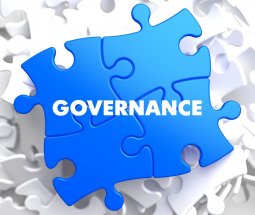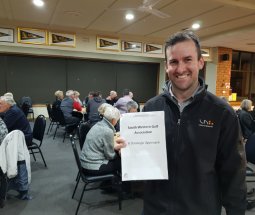Composition of the Committee
The make-up of the Committee for most clubs is a balancing act between what is desired or needed and what is possible. The club’s constitution provides some requirements e.g. how many Committee members are to be appointed by the Committee and how many are to be elected by voting members.
The Committee composition should reflect the mix of professional knowledge and experience that would be optimal. These may include business, accounting, legal, strategic, marketing, and others related to the club’s activities. A good mix (male/female, age, ethnicity, geographic location etc.) needs to be considered as does represntation of the different sections of the club.
Finally the Committee may want to agree to minimum experience with the club or sport. There is no right answer, however two questions are relevant:
- What is the minimum time a person needs to be a member or have involvement with the club prior to being considered for the Committee?
- Does a Committee Member need to have had an active role or connection within the club?
Portfolio Representatives
Some Committees include Portfolio Representatives with responsibilities in a specific area of club function e.g. “Senior Men’s Teams” or “Finance” or “Junior Development”. The portfolio may have its own Sub-Committee.
Portfolio Representatives’ main role is to pass information between the Committee and the portfolio area and vice versa to keep both the Committee and the portfolio interest groups reliably informed. Portfolio Representatives roles include attending Sub-Committee meetings as a representative of the Committee, or otherwise staying informed about the major issues. In this capacity a Portfolio Representative may need to:
- Listen and seek understanding
- Explain the reasons for Committee decisions
- Look for ways the Committee may be able to help that portfolio area
- NOT commit the Committee to any specific course of action
- Report to the Committee on the special needs, interests, requirements, and opportunities
- Be available to discuss their Portfolio with any interested member of the club and assist with explaining issues to those who have concerns or issue
- Represent that Portfolio on behalf of the Committee at other forums and meetings as agreed with others
Use of Sub Committees
For efficient and effective use of both time and expertise, smaller working groups or sub committees may be established. A Working Group is usually one established for a finite period to undertake specific tasks, whereas a sub committee is generally required on an ongoing basis and forms part of the essential governance responsibilities e.g. finance, risk.
Some pointers about sub committees:
- They generally meet separately to and do some of the ground work for the Committee, e.g. draft resolutions, review documents, gather and assess information to take back to the Committee
- A representative of the Committee should usually attend sub committee meetings but not Chair them
- A sub committee is authorised by the Committee through a drafted Terms of Reference
- Sub committees usually elect their own Chair and refine the drafted Terms of Reference at the fist meeting-these are reviewed and updated annually
- The sub committee develops a reporting system back to the Committee
- The decision-making power should be maintained at Committee level
- Sub committees would generally meet no less than quarterly, however this should be defined
- Sub committees need to comprise of people with the relevant skills
- Try not to have sub committees with too many members, 3-4 members is generally adequate.
Organisational Structure
The structure will vary depending on the type and the size of the club. The organizational structure should:
- Be simple and clear (diagrams work well)
- Be kept up to date and provided to relevant bodies e.g. Consumer Affairs, Local Government
- Detail different sections e.g. Juniors, Veterans and who is responsible
- Provide details of sub-committees
- Be accessible to members, volunteers and stakeholders
- Be reviewed at least every two years by the Committee and proposals for major changes taken to the AGM.
Helpful Resources:

.jpg)

